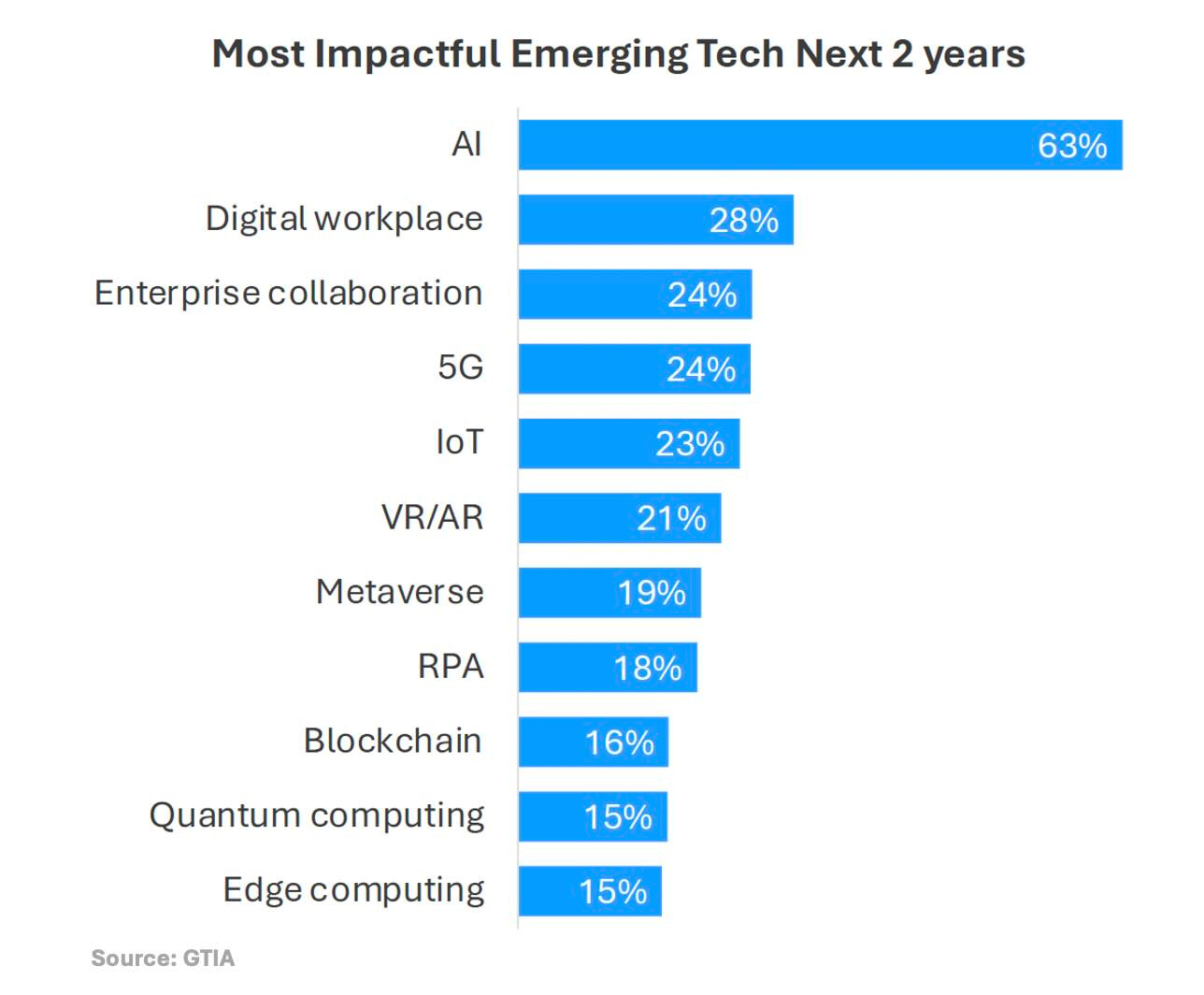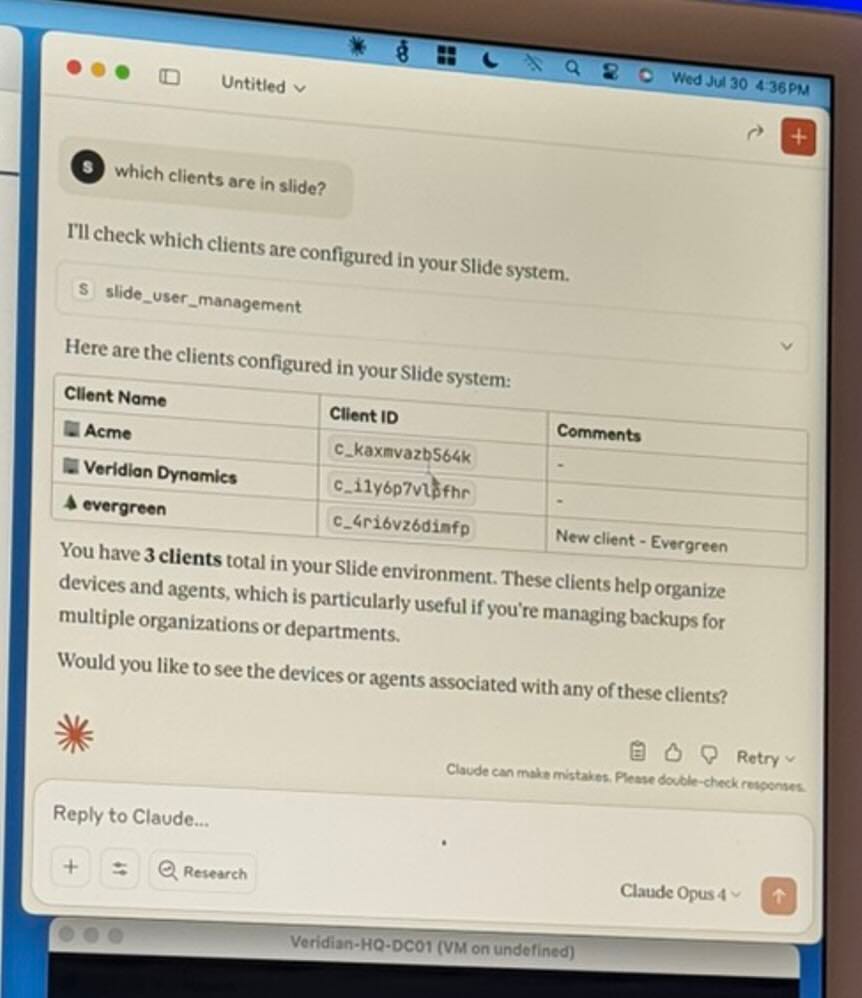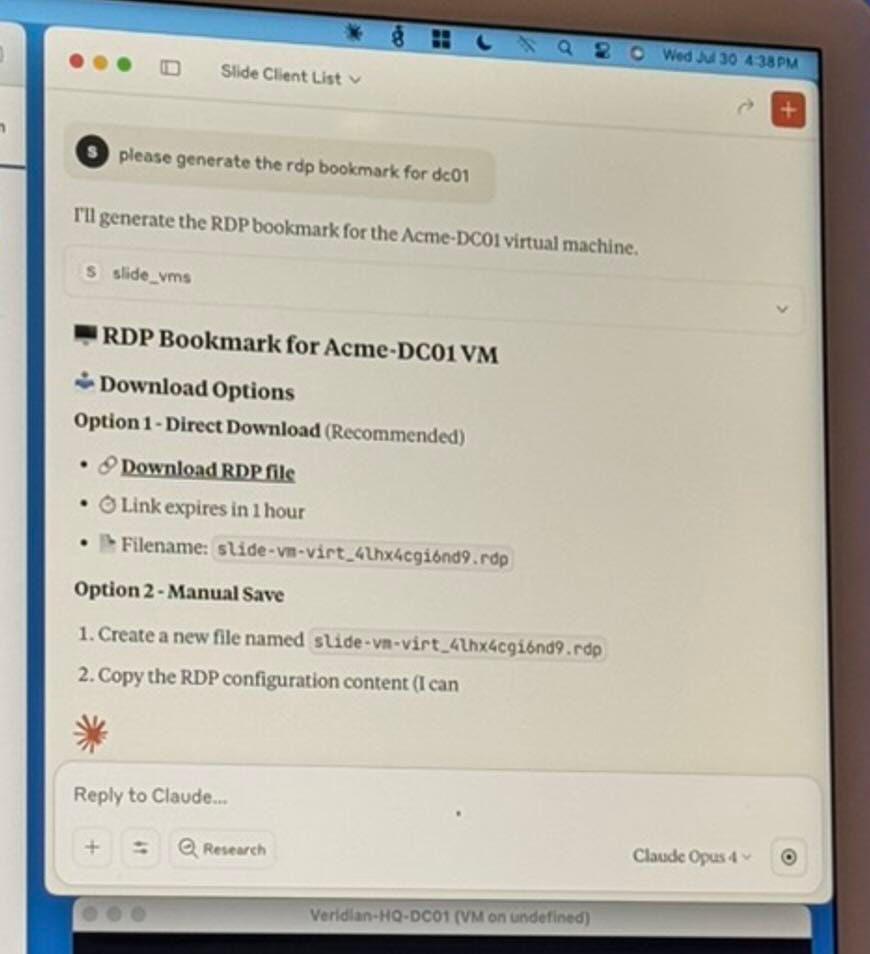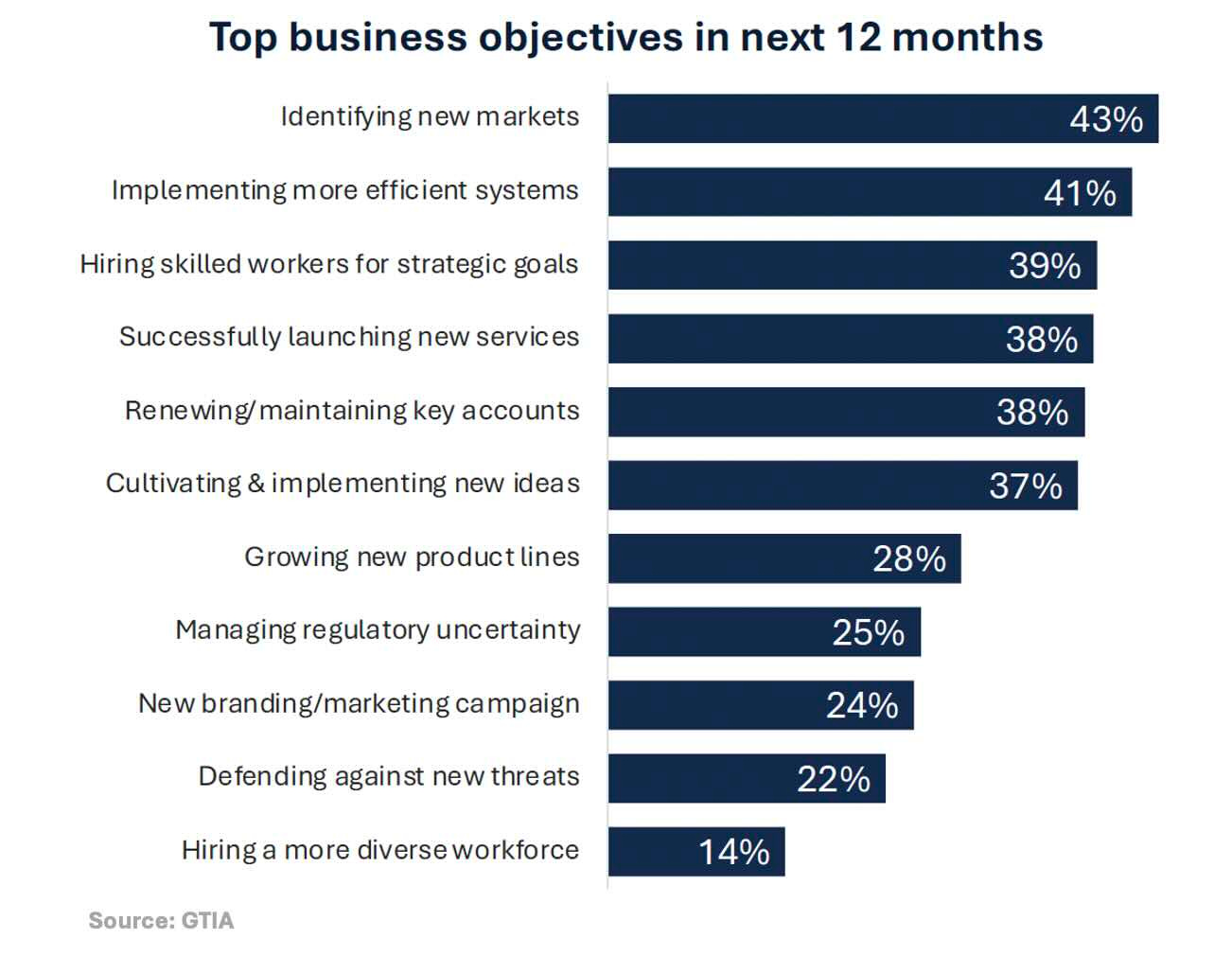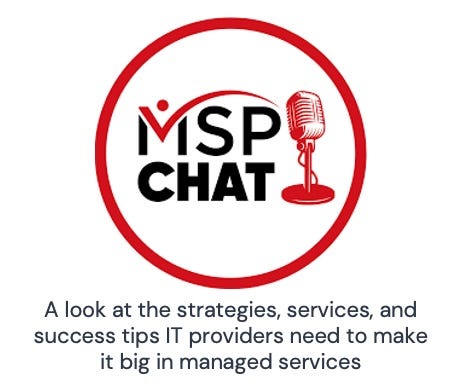Pax8 Sees Just One Way to Win in Agentic AI: Smash the Rules
The rules it has in mind, moreover, apply to vendors and MSPs as much as marketplaces. Plus: Slide’s step into the MCP future and yin-and-yang SMB data from GTIA.
As regular readers know, I went AWOL for a few weeks recently. Unfortunately for me, it coincided with Pax8’s Beyond conference in June.
I say unfortunately for me, because my unplanned absence prevented me from speaking with Pax8 leadership about the vision they outlined at the conference until GTIA’s ChannelCon show in Nashville last week, which in turn means I’m only starting to realize the degree to which that vision just might point the way toward the next great epochal shift in what it means to be a marketplace or distributor in the age of agentic AI.
Pax8’s certainly thinking along those lines. “We’re basically saying this is a revolutionary moment, not an evolutionary moment,” explains Ryan Walsh (pictured), the company’s chief strategy officer. “This is smash the rules.”
Old-timers like me have seen these moments before. Pax8 is a marketplace operator not a distributor, as its executives will politely but insistently remind you should you forget. But marketplaces are kin to distributors, which once upon a time made their money (and good money at that) picking, packing, and shipping boxes full of hardware and software.
Then along came the cloud, and suddenly boxes became obsolete. Well, not exactly. People still needed hardware, and hardware still came in boxes. But the software was all hosted online, leaving nothing to pick, pack, or ship and spurring some experts to predict the death of distribution.
It was an adapt or die moment, and the distributors adapted, building cloud marketplaces that along with a new crop of born-in-the-cloud competitors gave IT providers and their customers exactly what they wanted: easy, aggregated access to a mix-and-match catalog of software- and infrastructure-as-a-service products that they could bundle with services and turn into solutions.
The model worked, and especially for Pax8, one of those cloud-native upstarts, which has over 42,000 partners supporting more than 700,000 SMBs, a 1,010% three-year revenue growth rate as of last summer, and a big plaque on the wall as Microsoft’s most recent global partner of the year.
And now, the company’s convinced, the formula responsible for that success is doomed to be a dangerously inadequate relic of a bygone era within a few short years.
“We have to transform now, or we’ll get left behind,” Walsh says. “A marketplace won’t be effective if it’s not AI ready.”
Or more specifically agentic AI ready, Pax8 argues, based on logic that applies as much to vendors and MSPs as to marketplaces. Per the title of a research report the company published during Beyond, IT as a whole is on the cusp of an agentic inflection point poised to change nearly everything about how software gets made and used.
You know how MSPs increasingly want AI to do work that people once did? Their customers have the same aspiration, and satisfying it will take more than even the next-gen cloud marketplace Pax8 introduced two years ago can do. It will take a platform capable of coordinating the efforts of cloud infrastructure that businesses never see, SaaS apps they never touch, and agents they supervise from afar if at all, flawlessly, autonomously, and in real time.
Pax8 calls the output of all that behind-the-scenes orchestration “managed intelligence,” and the partners who sculpt it to the needs of end users “managed intelligence providers,” or MIPs. Anecdotally speaking, I think that term has been more confusing than clarifying so far for MSPs, but there should be nothing confusing to anyone about the prize Pax8 has its eyes on: getting in on an addressable market for agentic AI services valued by Boston Consulting Group in a report commissioned by Google at roughly $1 trillion.
“We just want that to be as easy as possible, and there’s nobody that’s focused on that challenge,” says Pax8 President and Chief Commerce Officer Nick Heddy.
If they build it, will we come?
And it’s true. No marketplace or distributor I’m aware of right now is thinking as ambitiously as Pax8 is about what it will take to be as relevant in tomorrow’s agentic age as they are today in the cloud. The company unveiled a slew of agent-friendly marketplace enhancements at Beyond, including a set of verticalized agent templates for Microsoft Copilot Studio, built-in access to Microsoft’s recently introduced Entra Agent ID directory, an integrations hub equipped with MCP servers, and a still forthcoming marketplace specifically for agents built and sold not just by vendors but by MSPs as well.
Pax8 knows all that’s just an initial list of what it must build to get from where it is today to where it wishes to be later, and that the journey (much like the tech industry’s journey to agentic AI) will take years. Whether or not the investments it makes along the way end up having been wasted will depend ultimately on the degree to which vendors and MSPs buy into the company’s vision. Walsh won’t say much about the vendors for now, except that there are announcements coming from some of them soon, and that others will follow once they see the momentum enjoyed by those early adopters.
Getting MSPs onboard, Pax8 freely concedes, will be a heavier lift. Though IT providers have been urged to sell outcomes rather than products for years, many still don’t. That’s a problem with agentic AI, because what else can you sell but an outcome when the solution you’re pitching often has no interface to inspect and no users to train except bots. “They’re not ready,” Walsh says of MSPs.
Getting them ready, consequently, is a big part of Pax8’s agentic AI rollout, which as of last month included over 30 Guided Growth enablement programs and some 60 business and technical education courses.
The harder barrier to cross, though, could be skepticism. MSPs have endured a lot of hype through the years about supposed technological revolutions, a fact Pax8 itself acknowledges in its research report. This one isn’t hype though, the company insists, and there are a few reasons to think it’s correct:
1. Businesses want AI. Hard to say how much they want agentic AI, but SMBs in particular are eager to capitalize on the power of this AI stuff they keep hearing about, according to GTIA research presented at ChannelCon. Despite a range of economic headwinds we’ll explore later in this post, 52% of SMBs have a favorable view of emerging technologies generally and one specific emerging technology in particular:
Meanwhile, 31% of the SMBs GTIA polled call themselves “ambitious” about embracing AI. No one, in other words, is asking scarred veterans of IoT and blockchain to invest yet again in something their customers don’t understand or want.
“The demand is there,” Heddy (pictured) says.
2. Agentic AI is starting to work. Not for mom and pop just yet, admittedly, but Uber’s using it to provide better support and McKinsey’s has 12,000 agents augmenting its 40,000 employees.
3. Delivering agentic AI outcomes is precisely the kind of strategic value MSPs need to be adding. Because if managing devices and networks isn’t commoditized already, it will be for sure when AI’s doing it.
4. Getting into AI is easier than ever. Thanks to AI itself, which can do any coding required for you. “English is the hottest new programming language,” noted Austin McChord, co-founder and chairman of recently profiled data protection vendor Slide, during a ChannelCon panel session. “You don’t need dev skills in-house. You don’t need all of the humans. You can have a great idea and build your own app.”
5. There are risk free steps you can take to get started. Heddy calls them “no regret moves,” and they’re worth doing even if Pax8’s map for where AI’s headed has flaws.
“There are things that can happen that change the path, but that doesn’t change that you need to document your processes,” he says. “You need to have data in a good spot. You need to have your access locked down. You need to have a secure and well governed environment.”
And if any of that sounds daunting, at least consider the possibility that doing nothing could be the most regrettable move of all.
“Your cheese has moved,” Walsh warns. “You have to get in the game now or you could be strategically irrelevant to this journey.”
Slide is living in the MCP future
My last post included a prediction, based on a conversation with Elliott Hyman of Lyra Technology Group, that someday in the future managed services software could look a lot more like genAI chatbots than the often complex GUIs technicians use today.
I suppose I should have guessed that Slide’s McChord is living in that future today.
Very quietly and not long ago, Slide shipped an MCP-based tool (coded by McChord himself) that lets MSPs use Anthropic’s Claude as the administrative interface for the vendor’s data protection platform, and I got a demo of the system in Slide’s booth at ChannelCon. Want to see which clients you’re protecting? Just ask.
Want the RDP bookmark for a virtual machine? Your wish is Claude’s command.
This is the first time I’ve seen something like this in production, but it won’t be the last. Rewst, Keeper Security, 1Password, and Pax8 among others have all rolled out MCP servers just within the last few weeks. More will follow for sure, and it won’t be long before people start using them to create AI interfaces like Slide’s. Those tools won’t steal anyone’s job, but they will make technicians more productive and turn mastering a new UI into a thing of the past. I expect to see a lot of them.
The yin and yang SMB economy
Is the U.S. economy healthy right now? Depends on how you read the numbers.
Growth rose 3.0% on an annualized basis in Q2, we learned last week, exceeding expectations and easing recession concerns sparked by the 0.5% decline recorded in Q1. On the other hand, consumer spending barely grew at all and business investment was down sharply following a double-digit uptick earlier in the year.
That good news/bad news dynamic is consistent with what a lot of MSPs appear to be seeing, based on anecdotal data collected in ChannelCon hallway conversations, not to mention a recent interview for an earlier post with Joshua Skeens, CEO of managed services giant Logically.
“Business is going relatively well, but not as good as we would like it to be,” he said. Spending slowed late last year, Skeens noted, as it generally does in the months before an election.
“Typically coming out the next year growth takes off, and we’ve just not seen that, at least not in our sector,” Skeens says. “Talking to others, they’re not seeing it either.”
And we all know why, don’t we?
“We are in an economy right now that I would describe as relatively chaotic and uncertain,” says Carolyn April, vice president of research and market intelligence at GTIA. “It doesn’t matter what day of the week it is, you’re not really sure if you’re up or you’re down.”
Some businesses are clearly up. 34% of the SMBs polled by GTIA for a new research study say they’re thriving, a number that rises to 44% for IT companies. On the flip side, just 19% of manufacturers, who are especially vulnerable to tariff anxieties, are thriving and 51% of businesses overall say they’re “holding steady.”
There’s plenty more evidence of what April aptly calls “that whole yin and yang thing” in her data. Take a look at the top list of SMB business priorities, for example. Identifying new customers and markets tops the list, but is followed closely by getting more efficient. Launching new services is fourth on the list, but hanging onto key accounts is fifth.
“It’s like cognitive dissonance,” April observes.
Now, to some extent businesses have had both making more and spending less at the top of their wish list forever. But what I see in the data is a whole lot of nervousness restraining an equally great appetite for technology-fueled innovation.
Yes, 47% of SMBs held their tech budget about the same this year, and 12% actually cut it. But 38% said that if business conditions look good through the first half of the year, they’ll spend more than planned on IT in the second half.
True, 37% of surveyed SMBs called “maintaining stable ops” the top focus of their tech budget in the last 12 months, way more than the 22% who cited “strategic initiatives”. But 63% believe AI will be the most impactful emerging technology in the next two years, and 62% increased their AI budget this year in response.
“They’re very interested in AI,” April says. “They’re willing to open up their purse for it, and they know that they need to set aside part of the budget for AI spending.”
Most tellingly of all, when asked what they’d do with an unexpected financial windfall—like a huge new account or winning lottery ticket—35% of SMBs said they’d invest it in cutting-edge technology. The second most popular option, selected by just 18% of poll participants, was hardware upgrades.
“They’re interested in building on some of the newer technologies that are going to help them expand their business and be able to differentiate in the marketplace,” April says. All most of them need, I suspect, is the excuse to act on that desire that a stable, healthy economy would provide.
Two notes about ChannelCon for MSP Chat fans
You may remember the time MJ Shoer, GTIA’s chief community officer, said on the podcast I co-host that the newly launched association’s endowment was generous enough to support a lot more charitable giving. We didn’t know how much more, though, until this week.
Answer: a lot. GTIA will donate $1.5 million this year. To put that in perspective, the $420,000 granted to over 20 non-profits just during ChannelCon nearly tripled everything CompTIA awarded all of last year.
And given all the Pax8 and GTIA talk this week, it’s worth noting that former MSP Chat interview guest Matt Lee, Pax8’s senior director of security and compliance, has been named GTIA’s 2024-2025 member of the year.
We have luminaries of all sorts on MSP Chat every week. Check it out here.
Also worth noting
ContentRX, a community-minded new offering from Equilibrium Consulting, will diagnose the (probably many) problems with your marketing content for free.
Cynomi, who you’ve read about here recently, has a new partner program for MSPs and MSSPs.
Bitdefender has both a new MSP channel chief and a new cybersecurity advisory service.
Blackpoint Cyber and CyberFOX are partnering to merge privileged access management with MDR.
Agentic AI SecOps vendor Torq has a new alliance program that counts Google, Zscaler, NVIDIA, and Veeam among its inaugural members.
The iOS and Android versions of Keeper Security’s mobile platform both have new functionality.
Trend Micro’s new digital twin feature lets users test their defenses against simulated threats.
Rapid7 is clearly a member of team SIEM based on its latest product launch.
That Arctic Wolf’s Aurora platform processes over eight trillion security observations a week helps explain its new scalability partnership with Databricks.
Smallstep is partnering with Jamf to ensure that only approved, compliant, and hardware-verified devices can access sensitive systems.
Credentials theft is up 800% in just the first half of 2025, according to Flashpoint.
Compliance isn’t easy, yet 87% of security providers offer it, according to research from Apptega, which also (unsurprisingly) says differentiating has grown harder.
I demand a finder’s fee from Palo Alto, which clearly first encountered CyberArk here before deciding to buy the company for $25 billion.
LogicMonitor’s got FedRAMP authorization to operate.
Data protection vendor Backblaze has added new security features to its B2 Cloud Storage solution.
The latest version of BloodHound, the attack path management platform from SpecterOps, identifies paths across multi-vendor technology stacks.





